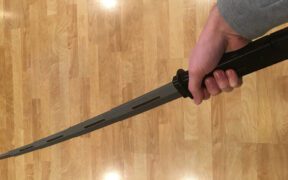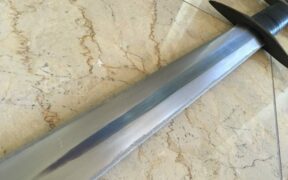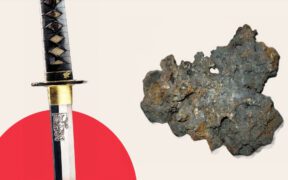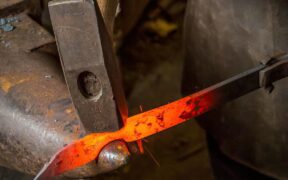Our content features commercial links to our products, committed to transparent, unbiased, and informed editorial recommendations. Learn More
Are Titanium Swords Worth the Hype?
NO AI USED This Article has been written and edited by our team with no help of the AI
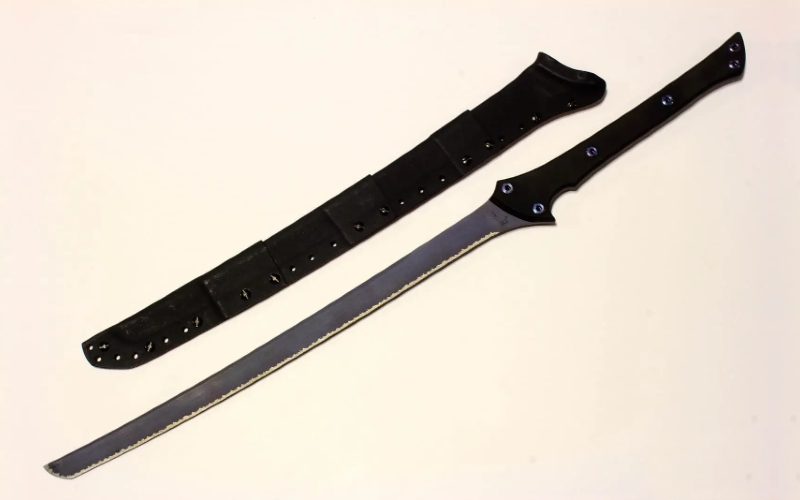
Modern science and technology bring out non-traditional materials in sword blades. Titanium is strong, lightweight, and corrosion-resistant, but is it a good metal for a sword? Titanium swords serve as fictional weapons in sci-fi novels, films, and video games, so many modern swordsmiths are bringing them to life.
Let’s explore the metallurgy and unique properties of titanium swords and how titanium blades compare to steel swords.
Characteristics of the Titanium Swords
Titanium is the 9th most abundant element on the planet and can be strengthened through alloying and heat treatment. However, its advantages over steel also come with some drawbacks.
Here are the qualities and properties of titanium swords:
Metal and Construction
Generally, titanium has a high strength-to-weight ratio, making it stronger pound for pound. Titanium has the strength of alloyed steels, but it is more lightweight, with its density at only about 60% of that of steel.
Titanium alloys are generally more difficult to forge than steel, as their resistance against deformation increases with subtle changes in metal temperatures. Titanium has a melting point of 1668°C, though most of its alloys operate below 538 °C.
Non-traditional swordsmiths hand forge titanium blades or use other forging methods available. After the forging, titanium and titanium alloys are heat treated to increase their strength and stability. However, like stainless steel, titanium is too brittle for swords.
Edge Retention
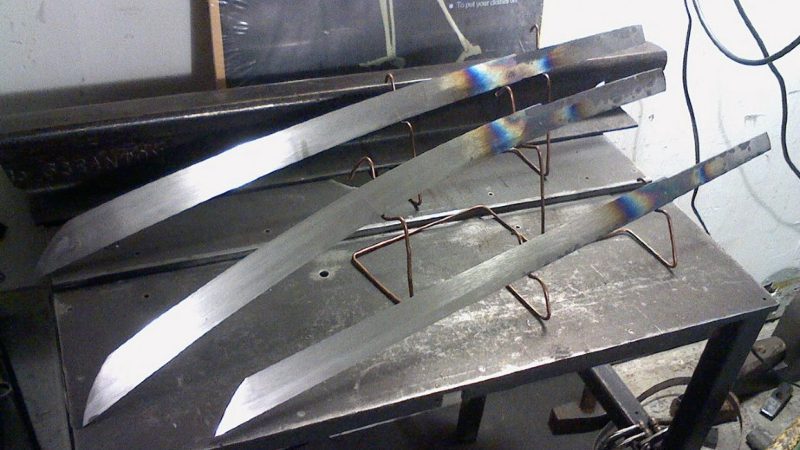
A sharp cutting edge makes a sword an efficient weapon for slashing and stabbing. Unfortunately, titanium blades cannot retain a sharp edge and are difficult to sharpen. On the other hand, a high carbon steel blade with good tempering would last longer and is easier to re-sharpen.
Lightweight
Swords must not be too heavy to wield nor too lightweight to the point that they cannot hit hard enough. Historical steel swords are around 2 to 3 pounds, but titanium swords are almost half their weight. To inflict the same amount of damage that a heavier steel sword would, a warrior must increase his effort, like on the number of slashing blows. Hence, a titanium sword is not as efficient in thrusting and cutting as a steel sword.
Corrosion Resistant
Titanium blades have good corrosion resistance against water, making it highly reliable on dive knives as divers need durable tools even when exposed to saltwater. However, a sword will not be subjected to the corrosive effect of sea water as a dive knife would and being corrosion resistant is not a factor into how well a sword performs in combat.
Titanium Swords vs. Steel Swords
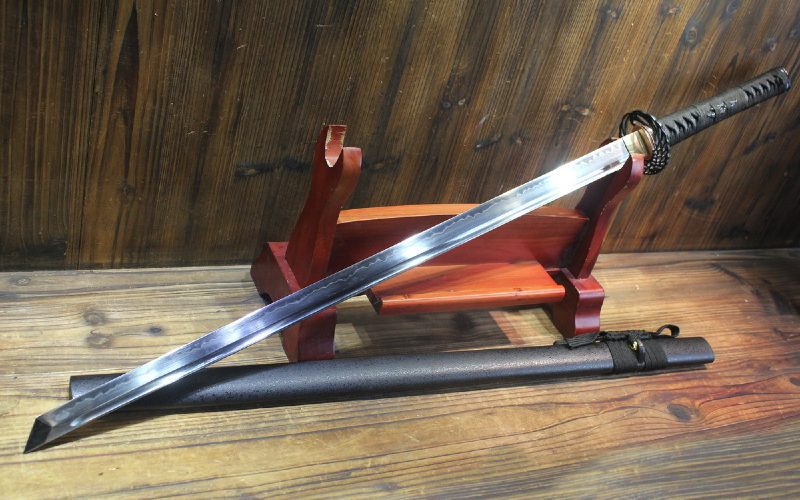
Titanium is lightweight, strong and corrosion resistant, but it is not the ideal metal for a sword blade. Most titanium blades are brittle and cannot retain a sharp cutting edge. They are also lightweight, making them inefficient for slashing attacks and blocking. So, the properly tempered high carbon steel blades remain the superior metal for swords.
Still, titanium swords are corrosion resistant and almost maintenance-free, making them ideal for sword collection and non-contact forms of practice in martial arts. Unfortunately, titanium blades tend to be more expensive, approximately four times that of stainless steel. They are also more corrosion resistant than those decorative swords with stainless steel blades.
Can titanium be used for weapons?
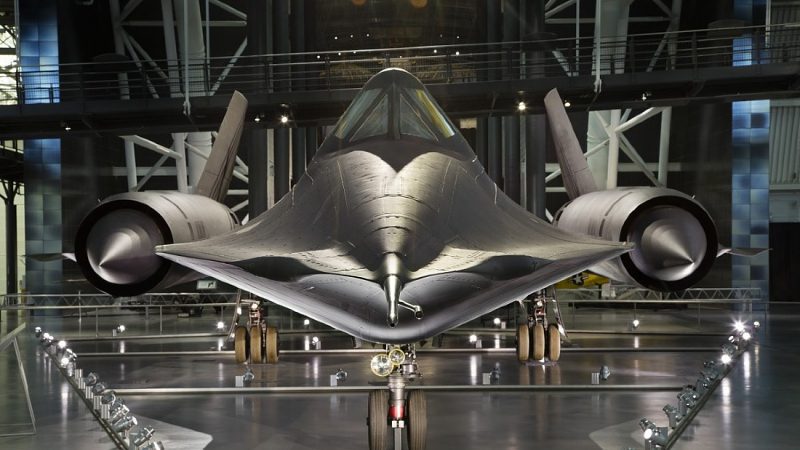
In military history, titanium was not used as swords but as weapons and military aircrafts, which were functional tools of war. During the start of the Cold War, the United States utilized the metal for their technological advantage against the Soviet Union. While the First and Second World Wars had utilized carbon and iron, the Cold War saw the use of titanium and uranium.
The most popular early use of titanium was the Lockheed Blackbird, a supersonic spy plane designed to fly three times the speed of sound. It outran the most advanced Soviet missile technology of the time. It was made of titanium, a metal that could withstand high temperatures while being lighter than steel. The Blackbird was later used in the Vietnam War and the Yom Kippur War.
The Soviet Union also utilized titanium in their submarines as the strength-to-weight ratio of the metal made it possible for the Soviet submarines to withstand extreme water pressure while being naturally buoyant. Also, titanium is corrosion resistant and non-magnetic, preventing the Soviet submarines from being detected and setting off magnetic mines. Today, titanium remains a significant metal for several weapons, ballistic armors, missiles, jet engines, aircrafts, and spacecraft.
Titanium Swords in Pop Culture
Titanium inspires several fantasy swords in sci-fi novels and films. In the film Blade, the African American superhero, played by Wesley Snipes, wields a titanium sword in his mission to hunt and kill vampires. Titanium swords are also among the fictional blades portrayed in video games, from Raft to Terraria and Minecraft.
Today, many swordsmiths still experiment with titanium blades, from machetes to axes, spears, samurai swords, melee weapons, and anime swords. While titanium is a non-traditional material for swords, collectors could find Japanese katana, short sword wakizashi, tanto, longsword, and several types of sabers with titanium blades.
Conclusion
Titanium challenged steel as the metal for modern military weapons, but steel swords remain superior to titanium swords. However, titanium blades remain practical for dive knives due to their corrosion-resistant properties, resulting in some swordsmiths utilizing them in swords. Nowadays, titanium swords are most popular for their appearances in video games, films, and sci-fi novels.
